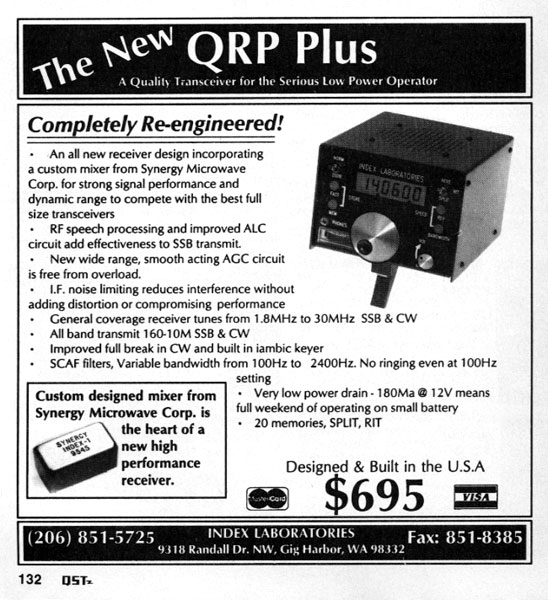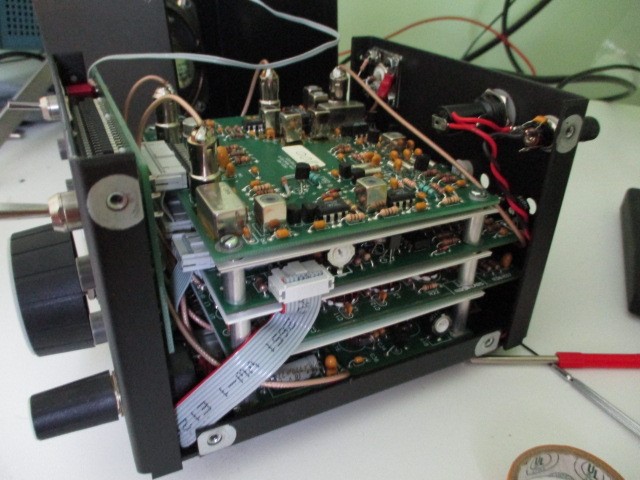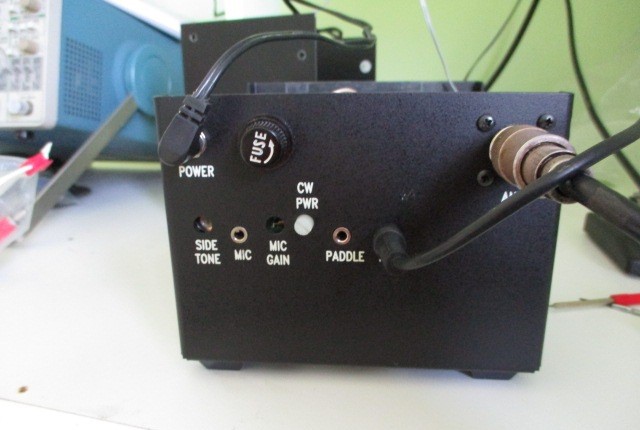Many thanks to SWLing Post contributor, Mario Filippi (N2HUN), who shares the following guest post that was originally published on the Delaware Valley Radio Association (DVRA) website:
Amateur Radios from the Past: The Index Labs QRP++
The Index Labs QRP ++ was an intriguing little radio manufactured back in the mid-‘90’s by Index Labs of Gig Harbor, WA. For those interested in QRP (low power operating, generally less than five watts output) this transceiver filled the bill perfectly. It supports CW and SSB, transmits on all WARC bands, covers 1.8 – 30 MHz receive, has full break-in CW and a built-in iambic keyer. It boasts 20 memories, weighs four pounds (perfect for portable operation) and measures 5.5 x 4 x 6 inches. It’ll run on a 12V 1.5 amp supply or a stout 12 volt gel cell. The internals (see second pic) are an engineering masterpiece with stacked circuit boards reminiscent of commercial rigs.
I recently acquired one of these radios as I was heavily into QRP in the 1970’s while using a TenTec Argonaut 509 and vertical on our apartment house’s roof. Back then the sunspot numbers scored much higher than today and many contacts were made, most notably a CW contact with Japan with a paltry one watt. So for nostalgic reasons I had to have one of these QRP++ rigs even though more modern and sophisticated versions are available.
At the moment bench tested is being done prior to sending it into action. One important component needing replacement was the memory battery which was totally kaput. Interestingly, this battery not only keeps the 20 memories alive but also brought back to life the CB radio-style S-meter reminiscent of radios from decades ago. Other items on the testing “to do” list will be checking power output, frequency accuracy, drift, and finally, on-air performance. The radio will feed a ground mounted 31’ vertical with 53 radials. With the right ionospheric conditions hopefully contacts will be aplenty.
Unfortunately, no service manual exists for this gem, but it rates a 4.1 out of 5 on the eham.net Richter scale, and a number of ops have published helpful information on problems, solutions and modifications. Notably the first run of these radios was later replaced with improved models boasting higher performance via a custom designed mixer, so knowing the serial number of your unit helps to determine if yours was an upgrade.
You can read and see more photos from the author, Mario Filippi N2HUN, at https://www.qrz.com/lookup/n2hun
Click here to read this article on the DVRA website.
Thank you, Mario, for sharing this article and many thanks to the DVRA for allowing us to re-post it.
I owned a QRP++ for a few years and absolutely loved it. At the time, it was one of the most portable full-featured transceivers on the market. Although it can struggle in RF dense environments like Field Day or other contests, for daily use it was very effective. I eventually sold mine to fund the purchase of the Elecraft KX1 and, later, KX3.
I always loved the simple front-panel ergonomics of the QRP+ and QRP++. It’s an incredibly easy rig to operate in the field. Plus…it has a bit of a “cute” factor, if you like radios shaped like cubes.
There is a dedicated email discussion group for Index Labs transceivers–currently, they’re on Yahoo Groups but may migrate to another platform by end of year.
In addition, SWLing Post contributor, Eric McFadden (WD8RIF), has an archived webpage with a wealth of information about the Index Labs QRP+ series.
Thanks again for sharing this, Mario! I know you’ll enjoy the QRP++ once you get it on the air!
Do you enjoy the SWLing Post?
Please consider supporting us via Patreon or our Coffee Fund!
Your support makes articles like this one possible. Thank you!





